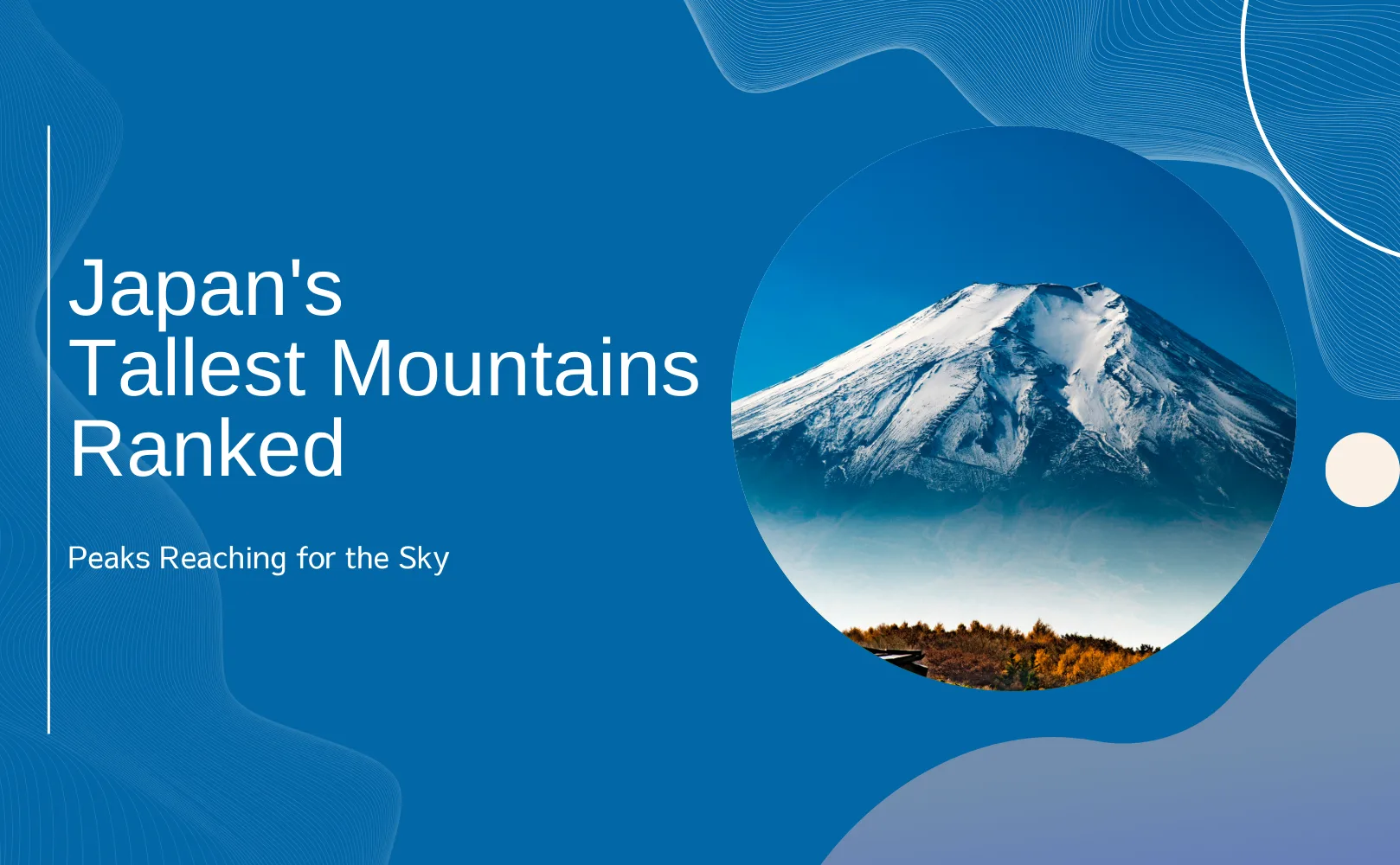Japan, with over 70% of its land covered in mountains, boasts a multitude of stunning and majestic peaks. Among them, the mountains exceeding 3,000 meters in altitude create a breathtaking spectacle as if touching the sky, leaving a deep impression on many. Today, we will explore the ranking and characteristics of Japan’s prominent high mountains.
Unwavering Number One: Mount Fuji, Japan’s Symbol
The tallest mountain in Japan is undoubtedly Mount Fuji (富士山, Fujisan), standing at an elevation of 3,776 meters. Spanning Shizuoka and Yamanashi prefectures, Mount Fuji’s beautiful conical shape has long been a subject of worship for the Japanese people. Today, it is recognized globally as a symbol of Japan and a UNESCO World Heritage site. The majestic view from afar, as well as the sunrise from its summit, offers an unforgettable experience.
Magnificent Peaks Over 3,000 Meters: Let’s Explore the Top 10
Besides Mount Fuji, Japan is home to several other high mountains exceeding 3,000 meters. Here is the ranking of the top 10 highest peaks by elevation:
| Rank | Mountain Name (English/Japanese) | Elevation (m) | Main Location/Mountain Range |
|---|---|---|---|
| 1 | Mount Fuji (富士山, Fujisan) | 3,776 | Shizuoka / Yamanashi Prefectures |
| 2 | Mount Kita (北岳, Kitadake) | 3,193 | Yamanashi Prefecture / Southern Alps |
| 3 | Mount Okuhotaka (奥穂高岳, Okuhotakadake) | 3,190 | Nagano Prefecture / Northern Alps |
| 3 | Mount Aino (間ノ岳, Ainodake) | 3,190 | Yamanashi Prefecture / Southern Alps |
| 5 | Mount Yari (槍ヶ岳, Yarigatake) | 3,180 | Nagano Prefecture / Northern Alps |
| 6 | Mount Warusawa (悪沢岳, Warusawadake) | 3,141 | Shizuoka Prefecture / Southern Alps |
| 7 | Mount Akaishi (赤石岳, Akaishidake) | 3,120 | Shizuoka Prefecture / Southern Alps |
| 8 | Mount Karasawa (涸沢岳, Karasawadake) | 3,110 | Nagano Prefecture / Northern Alps |
| 9 | Mount Kitahotaka (北穂高岳, Kitahotakadake) | 3,106 | Nagano Prefecture / Northern Alps |
| 10 | Mount Obami (大喰岳, Obamidake) | 3,101 | Nagano Prefecture / Northern Alps |
It is noteworthy that Mount Okuhotaka and Mount Aino share the third rank. As this table shows, many of Japan’s high mountains over 3,000 meters are concentrated in the beautiful Japanese Alps region (mainly the Northern and Southern Alps) in the central part of Honshu.
The Japanese Alps: A Treasure Trove of 3,000-Meter Peaks
As you can see from the table above, Japan’s high mountains are primarily located in the area known as the “Japanese Alps.” The Japanese Alps are broadly divided into the Northern Alps (Hida Mountains), Central Alps (Kiso Mountains), and Southern Alps (Akaishi Mountains. These areas, with their rugged mountain terrain and stunning natural scenery, are consistently popular among hikers.
- Northern Alps (Hida Mountains): Characterized by steep and rugged peaks such as Mount Yari, Mount Okuhotaka, and Mount Kitahotaka, this area offers diverse hiking trails and beautiful alpine flora.
- Southern Alps (Akaishi Mountains): Featuring relatively gentle ridgelines and deep valleys, mountains like Mount Kita, Mount Aino, and Mount Akaishi boast picturesque landscapes. In summer, the blooming of various alpine plants creates a spectacular view.
The Significance Held by Japan’s High Mountains
Japan’s high mountains are not merely natural landscapes but have held special significance in the country’s long history and culture. Since ancient times, mountains have been revered as sacred spaces and have been subjects of worship, often appearing as important settings in myths and legends. The majestic mountain peaks are also seen as symbols of challenge and overcoming obstacles, inspiring countless mountaineers with dreams and hopes.
Looking at Japan’s high mountains allows us to feel the grandeur of nature and sometimes to test our own limits, creating special experiences. We hope that these beautiful mountains will continue to be preserved and remain with us for many years to come.

